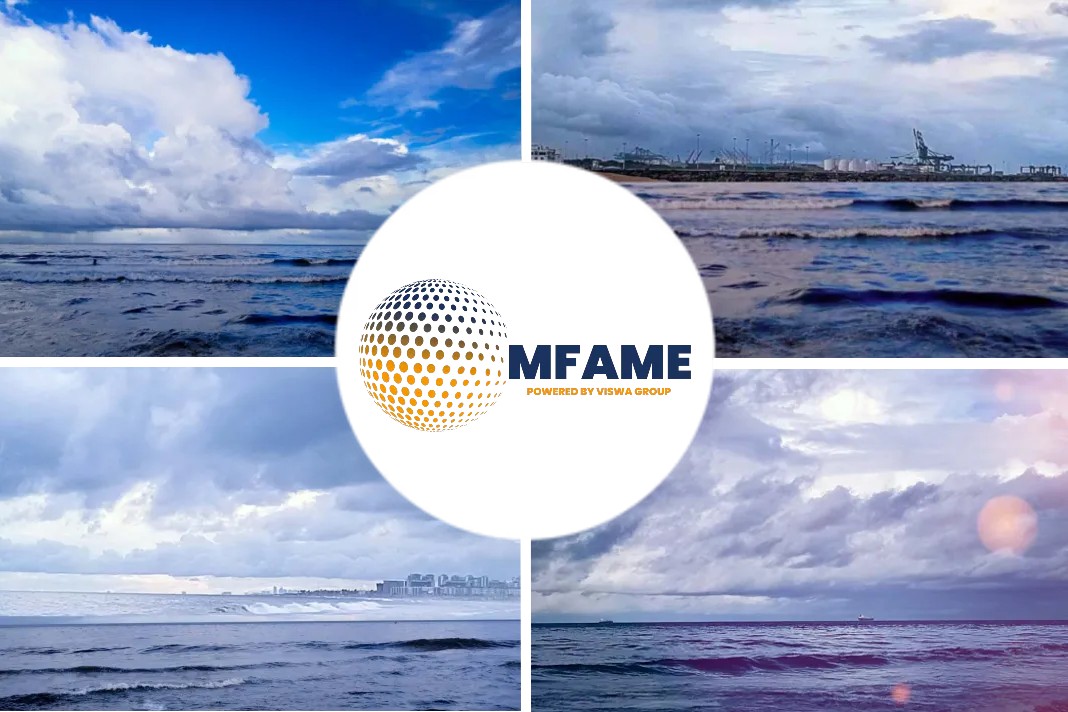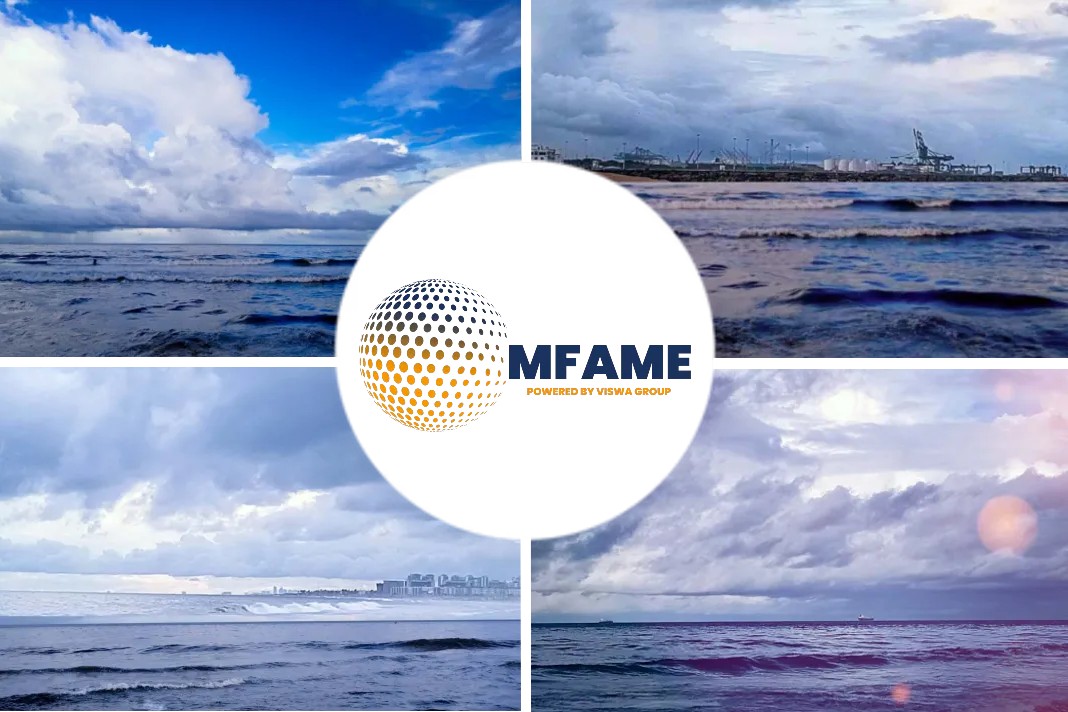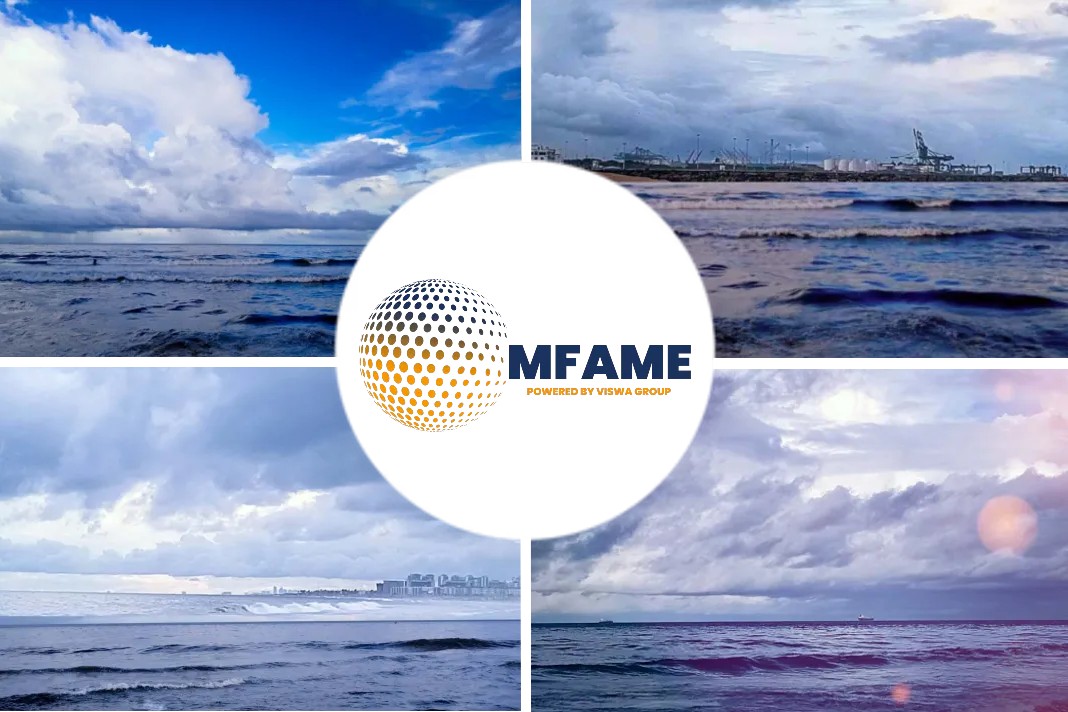- The CO2-emissions associated using an Exhaust Gas Cleaning System (EGCS, or scrubber) vary between 1.5% and 3% for a number of representative ships.
- The emissions caused by producing low-sulphur fuels for these ships are higher, depending on the quality of the low-sulphur fuel, the refinery and the crude oil slate.
- This is the main conclusion from the new study ‘Comparison of CO2 emissions of MARPOL Annex VI compliance options in 2020’ issued by CE Delft.
Scrubbers have a lower climate impact than low-sulphur fuels, mentions a press release by CE Delft.
Sulphur limits
MARPOL sets limits for the sulphur content of fuel oil. As of January 1st, 2020, the sulphur content of fuel oils used outside Emissions Control Areas (ECAs) is 0.50% m/m. Inside ECAs, the limit has been 0.10% m/m since 2015. In practice, there are two options to comply with the MARPOL Annex VI Regulation 14:
1. using an EGCS in combination with fuel oils with a sulphur content that is higher than 0.50% or 0.10%; and;
2. using fuel oil with a sulphur content of 0.50% (VLSFO), respectively 0.10% or less (ULSFO).
Both options result in an increase of well-to-wake CO2 emissions:
1. an EGCS requires energy which is generated by engines running on fuel oil and thus generate CO2. In addition there are emissions associated with manufacturing scrubbers and emissions from the seawater;
2. desulphurisation in a refinery requires hydrogen which is generally produced from methane, emitting CO2 in the process, as well as energy.
A comparative study
This report quantifies and compares the CO2 footprint of both options.
The use of an EGCS results in an increase of CO2 emissions between 1.5% and 3% for a range of representative ships.
Desulphurisation inevitably leads to an improvement of the fuel quality in terms of aromatics content and viscosity.
The increase of emissions associated with desulphurisation in a refinery are higher than 1% and in many cases multiple times higher, depending on the quality improvement of the fuel, the refinery layout and the crude used.
Jasper Faber: “This study provides a comprehensive overview of the climate impacts of different options to reduce sulphur emissions. It shows that in many cases, the carbon footprint of using a scrubber is lower than low-sulphur fuels.” The study has been commissioned by three major EGCS suppliers.
Increase in greenhouse gas emissions
The greenhouse gas emissions of shipping have increased from 977 million tonnes in 2012 to 1,076 million tonnes in 2018 (9.6% increase).
The carbon intensity of shipping has improved by about 11% in this period, but the growth in activity was larger than the efficiency gains.
In the next decades emissions are projected to increase by up to 50% until 2050, relative to 2018, despite further efficiency gains, as transport demand is expected to continue to grow.
While the impacts of the Covid-19 pandemic will probably cause a decline in emissions in 2020, they are not expected to significantly affect the projections for the coming decades.
Main findings
These are the main findings from the Fourth IMO Greenhouse Gas Study which has been released today. The study has been prepared for the International Maritime Organization by an international consortium comprising ten consultancies, research institutes and universities from four continents. The consortium was led by CE Delft.
Jasper Faber, CE Delft, project manager: “The report will provide the IMO with a factual basis for the negotiations on measures to address greenhouse gas emissions from shipping. It has again improved on the methods and presentation of the previous Greenhouse Gas Studies. We are proud to have assembled a truly global consortium bringing together some of the best experts in the field.”
Shinichi Hanayama, ClassNK, technical director: “In this fourth edition, we applied more comprehensive quality analysis for each task, which led to better quality ever, with more experience and expertise. We are proud that we finished up all the heavy tasks on schedule under the COVID-19 situation.”
Elena Hauerhof, UMAS, leader of the inventory work: “This study represents a significant step forward in estimating emissions inventories, and for the first time uses a fully IPCC -aligned approach to estimate international shipping emissions. The study has also significantly advanced the accuracy of AIS based estimations for any ship, and evidences this by undertaking a detailed validation against fuel consumption and other key parameters reported in EU MRV for over 9000 ships.”
Shuang Zhang, Dalian Maritime University, leader of the work on carbon intensity: “Carbon intensity of international shipping is a new addition to the IMO GHG Studies, in response to the Initial IMO GHG strategy. The estimates provided by this report have clearly shown where we are on the way towards low-carbon shipping. It has been a great pleasure to work with so many outstanding experts in this field.”
Bryan Comer, ICCT, leader of work on emission factors, and methodology review: “In addition to greenhouse gases, for the first time, an IMO GHG study has included estimates of black carbon emissions from ships, which have consequences both for climate and human health.”
List of Consortium members
The list of Consortium members led by CE Delft (the Netherlands), and, in alphabetical order, ClassNK (Japan), Dalian Maritime University (China), Fudan University (China), Institute of Economic Research Foundation, University of São Paulo (Brazil), Manchester Metropolitan University (UK), National Maritime Research Institute, National Institute of Maritime, Port and Aviation Technology (Japan), Purdue University (USA), The International Council on Clean Transportation, and UMAS, University College London (UK). For more information see MEPC 75-7-15 – Fourth IMO GHG Study 2020 – Final report.
Exhaust Gas Cleaning Systems
Ships that use Exhaust Gas Cleaning Systems (EGCSs) to comply with the IMO sulphur regulations have a small impact on the water quality in ports, when compared to future EU standards for priority substances in water.
This is the main conclusion of a new study carried out by CE Delft, with support from Deltares. The study calculates the predicted equilibrium concentrations for 11 metals and 16 Polycyclic Aromatic Hydrocarbons (PAHs).
Four of these metals and seven PAHs are priority substances under the European Water Framework Directive (EU WFD). In most ports and for most substances, the increase in concentrations caused by continuous discharge of a relatively high amount of EGCS wash water is less than 0.1% of the limit value in the EU WFD for 2021 for these priority substances (see figure below).
In ports with low hydrodynamic exchange (such as in the Baltic sea), the increase in concentration can amount to 0.6% of the limit value for a few PAHs. The study also evaluates the accumulation of substances in port sediment.
IMO regulations
The International Maritime Organisation (IMO) regulates emissions of sulphur oxides (SOx) from ships. Ships can either use fuels with a limited sulphur content or use an EGCS. As of 1 January 2020, the global sulphur limit will be reduced from 3.50% m/m to 0.50% m/m.
This has led to an increase in the number of ships equipped with EGCSs. An EGCS utilises water to remove SOx and other harmful air emissions such as Particulate Matter (PM) and PAHs from the exhaust in a chemical-mechanical process known as scrubbing. So-called open-loop EGCSs discharge the wash water into the surrounding water.
Environmental impact
Concerns have been raised about the environmental impact of wash water discharges, especially in port areas.
The study is unique as it uses empirical data from almost 300 EGCS wash water samples, the most extensive dataset of this kind analysed in this manner, and because it employs the MAMPEC-BW model to calculate equilibrium concentrations in ports.
MAMPEC-BW is a model that is widely used in a regulatory context, e.g. for the approval of ballast water management systems and antifouling agents.
Cruise Lines International Association Europe
The study was commissioned by the Cruise Lines International Association Europe (CLIA Europe) and a number of industry partners with the aim of furthering publically available knowledge on the impact of wash water discharges from open-loop EGCSs on port water and sediment.
In support of this objective the report has been submitted to the GESAMP EGCS Task Team for consideration in relation to their advisory submission to the IMO on the impacts of EGCS wash water, and as an IMO Information (INF) Paper for presentation at IMO PPR 7 in February 2020 by CE Delft.
Quote from Jasper Faber, director maritime of CE Delft: ”The study shows that in ports representative of those in North-Western Europe, the increases in concentrations are small when compared to the applicable limit values for priority substances. The methodology developed in this study can also be tailored for other ports anywhere in the world to analyse the specific impacts in those ports.”
Vessel Emission Control Areas in Beijing
On 25 July, 2019 Jasper Faber gave a presentation at the International Workshop on Establishment and Implementation of Vessel Emission Control Areas in Beijing, China. His spoke about the availability of low-sulphur fuel in ECAs.
In 2018 CE Delft carried out a study on the economic and sustainability impacts of a number of variants of an aviation tax (CE Delft, 2018). After the report was completed, the Ministry of Finance indicated it would like several new variants to be examined in which the tax would cover not only passenger departures but also cargo aircraft. The present report analyses the economic and sustainability impacts of these variants. It also recalculates the impacts of two of the earlier variants, as a new version of the AEOLUS model is now available.
Short-term policy measures
The international shipping sector needs to quickly adopt short-term policy measures to cut operational greenhouse gas (GHG) emissions of the existing fleet, according to a new study. The study concludes that only a subset of potential policy options, namely those that mandate changes in how the existing fleet is operated can achieve the significant effect required to meet the sector’s emission reduction objectives. Examples of these policies are speed limits or mandatory limits on operational efficiency or shaft power. The study out today led by CE Delft and UMAS, funded by the European Commission, analyses potential short-term measures listed in the International Maritime Organization’s (IMO) initial strategy on the reduction of GHG emissions from ships.
The strategy, adopted in April 2018, includes commitments to peak emissions as soon as possible, to improve the carbon intensity of international shipping by at least 40% by 2030 (compared to 2008), and to reduce the total annual emissions by at least 50% by 2050 (compared to 2008).
The specific policy measures that can turn those commitments into practice are being considered by the IMO and will be discussed as part of the IMO negotiations in London next week. The measures considered in the study are those that could enter into force imminently and help to control GHG emissions over the period between now and 2030.
Concrete proposals
As requested by the IMO Marine Environment Protection Committee in October last year (MEPC 73), several countries have submitted concrete proposals for reduction measures. These include proposals for speed limits, for the improvement of ship’s operational efficiency as well as a proposal for a shaft power limit. All proposals are assessed in the study to be compatible with the IMO’s objectives, if they are sufficiently strict.
The study also considered options for non-mandatory limits that use existing policy (Ship Energy Efficiency Management Plan, SEEMP) to incentivise greater efficiency. Such non-mandatory limits were deemed ineffective, as they would reduce GHG emissions by not more than 2% from the expected business-as-usual levels.
IMO meeting in May
The IMO meeting in May will also discuss options to further strengthen the current internationally agreed energy efficiency rules under the Energy Efficiency Design Index (EEDI) regulation. The study analysed the emissions reduction impacts of further increasing the stringency of this regulation.
The study found that these changes would not bring about any significant GHG reductions by 2030. However, they would achieve more impact further into the future.
For more information please read here
Did you subscribe to our daily newsletter?
It’s Free! Click here to Subscribe!
Source: CE Delft




























Where’s the CE Delft study to read and any critical review? This is just a press release.
Thank you for reading and commenting. You will find the study on their website. Check the source link and the study link mentioned.
Thanks and Regards,
Mfame Team.